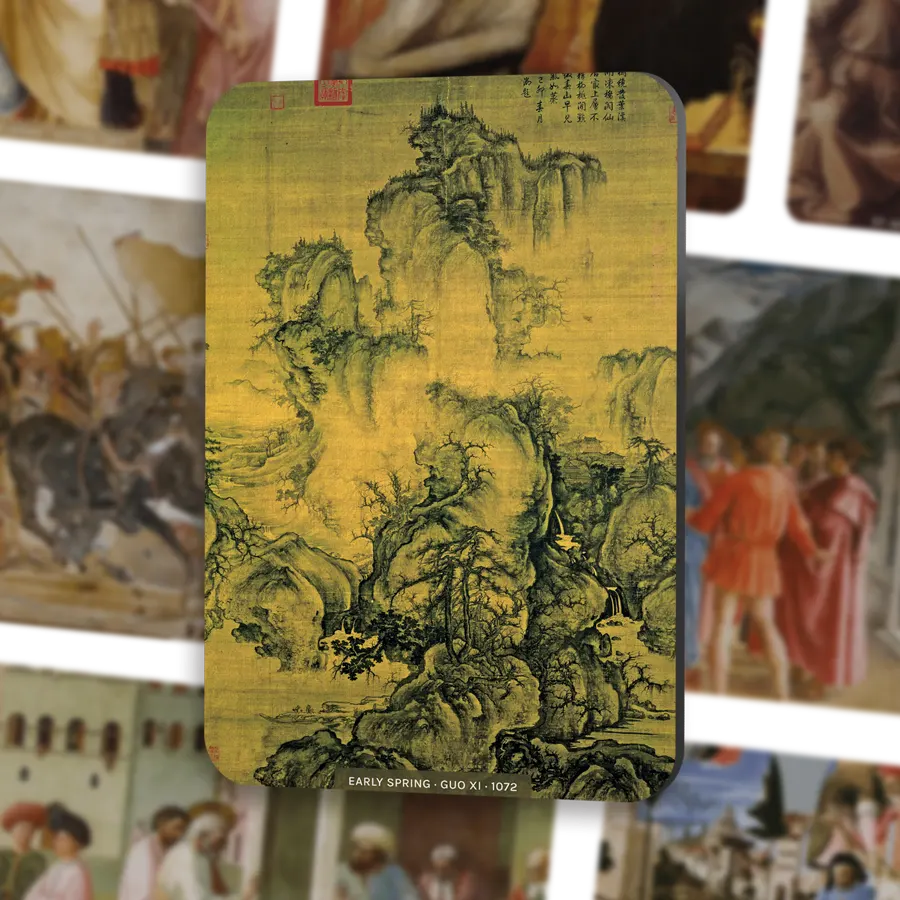Modernism is a cultural and artistic movement that emerged in the early 20th century. It was a period marked by a radical break from traditional forms and conventions, and a strong emphasis on innovation and experimentation. This article aims to provide a comprehensive guide to modernism, exploring its key concepts, influences, and impact on literature and art.
What is modernism?
Modernism is a term used to describe a wide range of cultural, artistic, and intellectual practices that emerged in the early 20th century. It is characterized by a rejection of traditional forms and conventions, and a search for new forms of expression. In literature and art, modernism emphasized individualism, subjectivity, and a sense of disillusionment and loss.
Characteristics of modernism
Modernism is characterized by several key features. Firstly, it emphasizes experimentation and new forms. Modernist writers and artists sought to push the boundaries of their respective mediums, exploring innovative techniques and styles. Secondly, modernism often incorporates elements of stream-of-consciousness, a narrative technique that aims to replicate the flow of thoughts and perceptions in the human mind. Thirdly, modernism is characterized by a sense of fragmentation and discontinuity. Modernist works often employ non-linear narratives and fragmented structures to convey the fragmented nature of modern experience.
Influences on modernism
Modernism was influenced by a variety of factors. One of the key influences was industrialization, which had a profound impact on modern art. The rapid technological advancements and urbanization of the early 20th century inspired artists to create works that reflected the changing industrial landscape. Another significant influence on modernism was the literary movement known as literary modernism, which emerged in the late 19th and early 20th century. Writers such as James Joyce, Virginia Woolf, and Gertrude Stein played a crucial role in shaping the modernist movement.
Modernism in literature
Modernism had a profound impact on literature, reshaping the way writers approached their craft. James Joyce is often regarded as one of the key figures of modernist literature. His novel "Ulysses", published in 1922, is considered a landmark work of modernist fiction. Virginia Woolf is another important modernist writer, known for her stream-of-consciousness narrative style and exploration of female identity. Gertrude Stein, a prominent writer and art collector, was also a central figure in the modernist movement, known for her experimental writing and involvement in the avant-garde art scene.
What are the key figures of modernism?
James Joyce and modernist literature
James Joyce is one of the most influential modernist writers. His novel "Ulysses" is a complex and highly experimental work that explores various themes and literary techniques. Joyce's use of stream-of-consciousness and his innovative narrative style have had a lasting impact on the development of modernist literature.
Virginia Woolf and literary modernism
Virginia Woolf was a key figure in literary modernism. Her novels, such as "Mrs. Dalloway" and "To the Lighthouse", employ the stream-of-consciousness technique to delve into the inner lives of her characters. Woolf's exploration of female identity and her experimental narrative style have made her an important voice in modernist literature.
Gertrude Stein and the modernist movement
Gertrude Stein was a key figure in the modernist movement, both as a writer and an art collector. Stein's writing, characterized by its linguistic experimentation and repetition, challenged conventional notions of narrative structure and language. Her involvement in the avant-garde art scene also made her a central figure in the modernist movement.
What are the major themes in modernist art?
Industrialization and its impact on modern art
Industrialization had a profound impact on modern art, providing artists with new subject matter and artistic possibilities. The rapid technological advancements and urbanization of the early 20th century inspired artists to explore the themes of industrialization, mechanization, and urban life in their work. This focus on the modern world and its impact on society became a central theme in modernist art.
Stream of consciousness in modernist literature
Stream of consciousness is a narrative technique used in modernist literature to replicate the flow of thoughts and perceptions in the human mind. This technique allows writers to delve into the inner lives of their characters, providing a deeper understanding of their emotions and motivations. The use of stream of consciousness became a defining feature of modernist literature.
Experimentation and new forms in contemporary art
Modernist artists embraced experimentation and new forms as a means of expressing their unique perspectives on the world. They sought to push the boundaries of their respective mediums, exploring innovative techniques and styles. This emphasis on experimentation and new forms became a defining characteristic of modernist art.
How did modernism affect literature?
The influence of Ezra Pound on modernist poets
Ezra Pound was a highly influential figure in the modernist movement, particularly in modernist poetry. Pound's advocacy for free verse and his promotion of imagism, a movement characterized by the use of precise, concrete language, revolutionized the way modernist poets approached their craft. His influence can be seen in the works of poets such as T.S. Eliot and William Carlos Williams.
William Faulkner and the fragmentation of modernist work
William Faulkner is known for his exploration of the Southern United States and his use of innovative narrative techniques. His novels often employ fragmentation and multiple perspectives to convey the complex and fragmented nature of modern experience. Faulkner's work is considered a cornerstone of modernist literature.
E.E. Cummings and the use of stream of consciousness
E.E. Cummings is known for his experimental use of language and typography in his poetry. His work often incorporates stream-of-consciousness techniques, allowing the reader to experience moments of heightened emotion and intense introspection. Cummings' innovative approach to language and form made him a prominent figure in modernist poetry.
What is postmodernism and its relationship to modernism?
Postmodernism as a reaction to modernism
Postmodernism emerged as a reaction to the perceived limitations of modernism. While modernism emphasized individualism and subjective experience, postmodernism embraced the collective and the multiplicity of perspectives. Postmodernism rejects the idea of a singular truth or grand narrative and instead emphasizes the fragmented and contradictory nature of reality.
Comparing postmodern and modernist literature
Postmodernist literature shares some similarities with modernist literature in terms of experimentation and innovative narrative techniques. However, postmodernist literature often incorporates elements of pastiche, intertextuality, and self-reflexivity, which distinguish it from modernist literature. Postmodernist writers, such as Marcel Proust and Samuel Beckett, challenge traditional notions of narrative and explore the complexities of language and representation.
Postmodernism in visual art
Postmodernism has had a significant impact on visual art, challenging traditional notions of artistic value and undermining the idea of a single artistic genius. Postmodernist artists often incorporate elements of appropriation, fragmentation, and irony in their work, blurring the boundaries between high and low culture, and questioning the authenticity and originality of the artwork. Performance art and abstract art are prominent forms within postmodern visual art.
Learn more about modernism in art through Triumph of Modernism educational magnetic cards.
Q: How was modernism defined in literature?
A: Modernism in literature was characterized by the experimentation with new forms and styles of writing, breaking away from traditional literary conventions. It reflected the changing perspectives and values of the post-Enlightenment era, questioning established norms and exploring new ideas and themes.
Q: Who were some of the notable modernist writers?
A: Many modernists made significant contributions to literature. Some of the renowned modernist authors include T.S. Eliot, Virginia Woolf, James Joyce, William Faulkner, Marcel Proust, and Gertrude Stein.
Q: What are the key elements of modernism?
A: Modernism was defined by several key elements, including a focus on individualism and subjective experience, a rejection of traditional storytelling techniques, experimentation with form and structure, and an exploration of new and unconventional themes and ideas.
Q: How did modernism influence other art forms?
A: Modernism had a significant impact on various art forms, such as painting and sculpture, architecture, theater, and music. It challenged traditional artistic approaches and pushed boundaries, encouraging artists to experiment and break away from established norms.
Q: What were the cultural influences on modernism?
A: Modernism was influenced by various cultural, social, and political factors of its time. These influences included rapid social change, the rise of industrialization and new technologies, political theories such as Marxism, and the aftermath of World War I.
Q: When did modernism flourish?
A: Modernism flourished during the early 20th century, particularly in the years following World War I. It continued to evolve and expand throughout the 1950s and 1960s, eventually giving way to different movements and styles.
Q: What is high modernism?
A: High modernism refers to the apex of the modernist period, typically characterized by the works of influential modernist authors and artists. It represents a more complex and experimental form of modernist expression.




